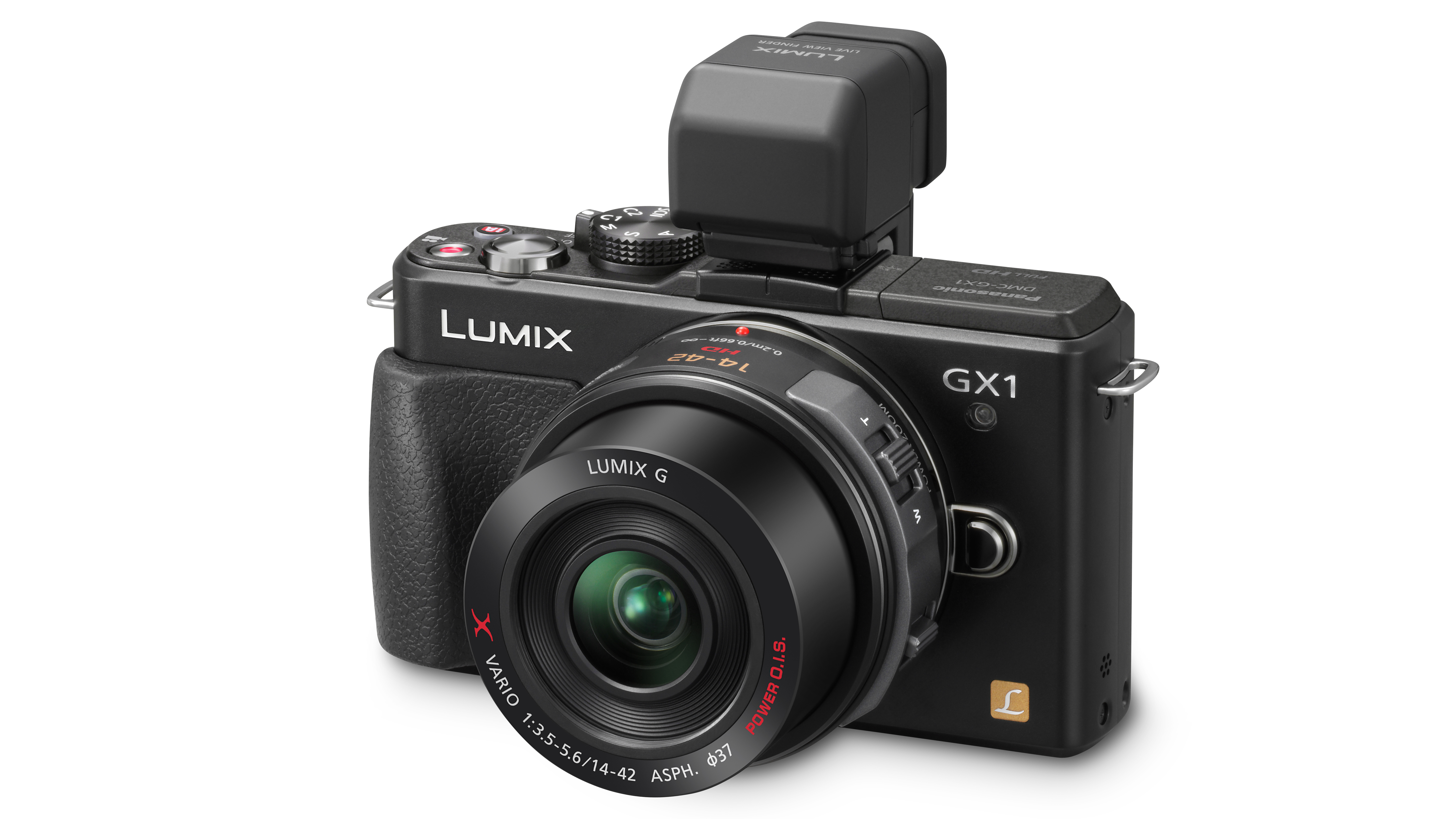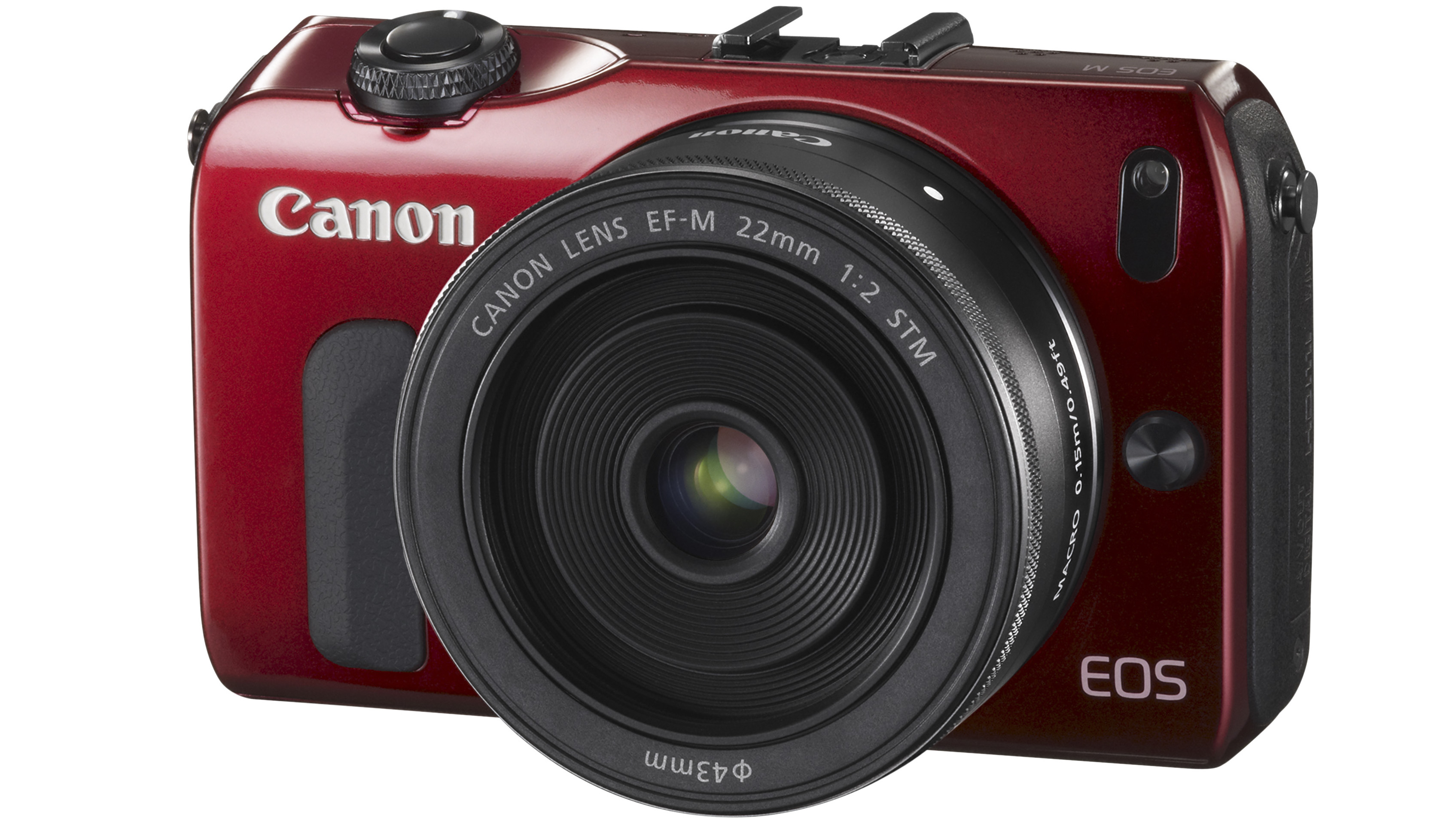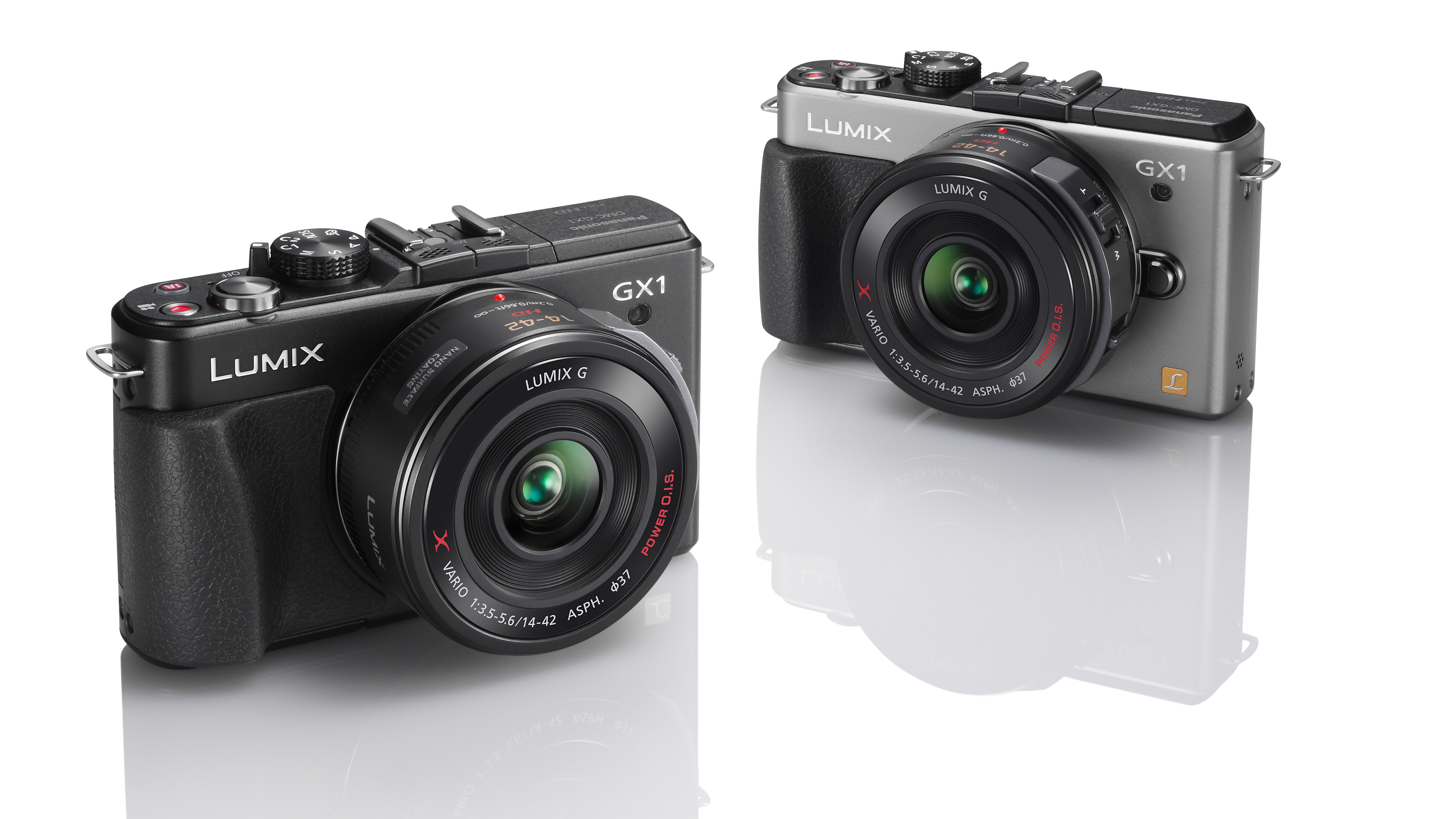Canon EOS M vs Panasonic GX1
Two compact system cameras go head to head
Canon M vs Panasonic GX1 viewfinder
The lack of a viewfinder has been one of the key aspects of the EOS M discussed in the days since its launch.

At present, the company has no plans to create an optional viewfinder to fit into the M's slot. The GX1 meanwhile, doesn't come with an inbuilt viewfinder like other cameras in the Panasonic range (for instance the Panasonic G5), but an optional viewfinder can be purchased, perhaps making it more versatile for those who prefer not to compose on a screen.
Canon M vs Panasonic GX1 autofocus system
When Canon announced the 650D, with its hybrid autofocusing system, we suspected that it might be revealing the technology it would use for its mirrorless camera. We were right, the EOS M utilises the advantages of both phase detection and contrast detection AF in its 31 point AF system.
Meanwhile, Panasonic is very proud of its autofocus system, which it claims to be the fastest in the world. It also commissioned independent research which showed that G series cameras were more accurate than other manufacturers.
Canon M vs Panasonic GX1 flash
In order to keep the size of the EOS M down, Canon decided not to include an inbuilt flash on the camera. David Parry from Canon UK says that he believes fewer people are using flash now, and it was more important for the camera to be small. That said, a flash, with a Guide Number of nine will come included in the box.

By contrast, Panasonic has managed to include a built-in flash into the GX1. Although it has a lower guide number of 7.6, it's a lot handier than having to fiddle around with attaching an external device.
Canon M vs Panasonic GX1 artistic modes
An increasing number of cameras are including artistic digital filters and modes in order to compete with the large number of creative photography apps found on modern smartphones.
Get daily insight, inspiration and deals in your inbox
Sign up for breaking news, reviews, opinion, top tech deals, and more.
Both the EOS M and the GX1 have a good range of digital filters which include on the M Toy Camera, Art Bold and Fish-eye and on the GX1 Expressive, Retro, High Key and Toy Camera.
Canon M vs Panasonic GX1 battery life
Many compact system cameras have a lower battery life than DSLR equivalents as the rear LCD screen has to be on all the time for composing images.
That said, the Panasonic says that the GX1 should provided around 310 shots per charge, which is considerably more than the 220-230 shots that Canon believes the EOS M is capable of.
Canon M vs Panasonic GX1 size
The two cameras are reasonably similar in size, but the Canon body only is marginally smaller.

With a kit lens attached, it's unlikely that you would be able to get either of these cameras in a pocket, but with the Canon's 22mm f/2.8 pancake lens, or the Panasonic 14-42mm power zoom lens, it may fit into a jacket pocket.
The GX1 is slightly heavier, coming in at around 320g, compared with the 298g of the Canon EOS M.
Canon M vs Panasonic GX1 price
At the time of their launches, the RRP of the Panasonic GX1 and Canon EOS M were actually pretty similar.
Back in November when the GX1 was announced, it came with an RRP of £759.99 (with 14-42mm power zoom lens), compared with the Canon's RRP of £769 (with 18-55mm kit lens).

However, after a few months on sale, the GX1 has come down to around £600 ($630), there will surely be many who hope the same will happen with the M.
Conclusion
Weighing up the pros and cons of both these cameras leave us with two devices that are fairly evenly matched.
Panasonic has been in the CSC game for a lot longer than Canon, so it has a lot of accessories and lenses available.
However, for those with existing Canon optics, or just those who wish to stay brand loyal, the EOS M is of course a very interesting proposition - marred only slightly by its current high price.
It will be interesting to see how these two huge players fight it out in what is looking likely to be an extremely competitive area.
Amy has been writing about cameras, photography and associated tech since 2009. Amy was once part of the photography testing team for Future Publishing working across TechRadar, Digital Camera, PhotoPlus, N Photo and Photography Week. For her photography, she has won awards and has been exhibited. She often partakes in unusual projects - including one intense year where she used a different camera every single day. Amy is currently the Features Editor at Amateur Photographer magazine, and in her increasingly little spare time works across a number of high-profile publications including Wired, Stuff, Digital Camera World, Expert Reviews, and just a little off-tangent, PetsRadar.
